“It’s NATO’s unity that must prevent my homeland from ever becoming a battlefield”
REPORTAGE: The annual exercise Namejs is currently taking place in Latvia, where deployed NATO soldiers and Latvian forces are defending against a simulated hostile attack. Recently, Danish Major General Jette Albinus visited some of the Latvian units she would command in the event of an attack on Latvia.
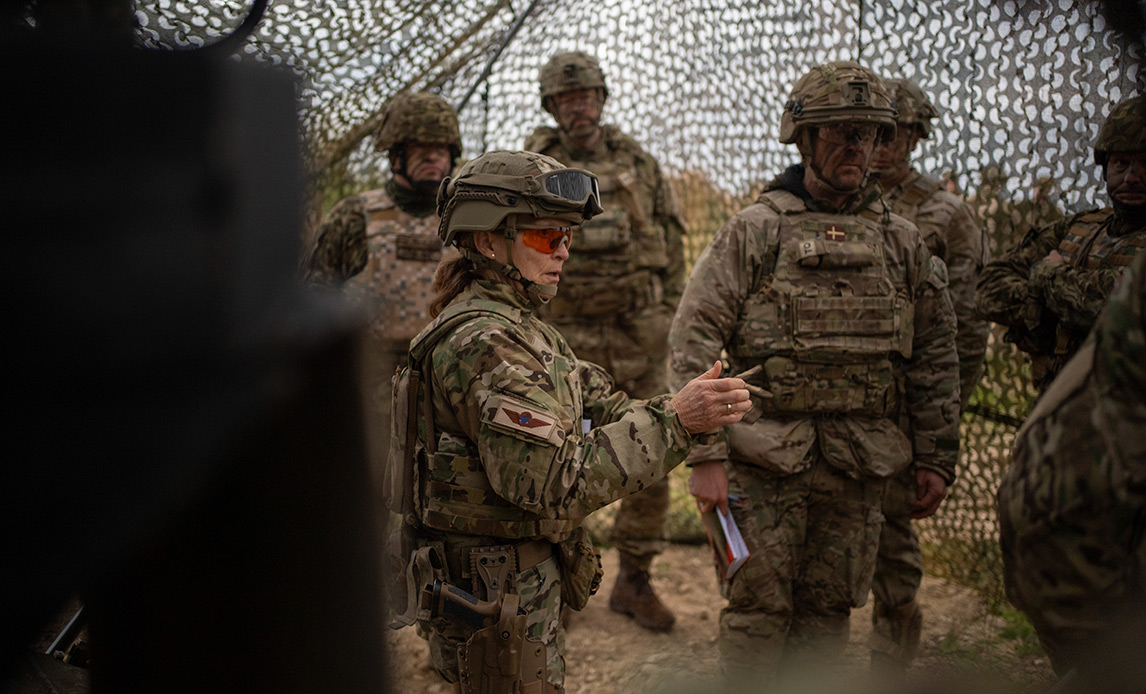
Major General Jette Albinus visits units from the Latvian Army and National Guard during Exercise Namejs. Photo: NATO Public Affairs Office
By Multinational Division North / The Danish Armed Forces
Somewhere in Latvia, two military helicopters fly east over endless stretches of pine and spruce forest and wet marshland, dotted with small islands of settlements in the green.
The impressive view illustrates the challenges any combat force would face down there. Wet boots are the least of it—though that alone can be bad enough.
Onboard one of the helicopters sits Danish Major General Jette Albinus, the commanding officer of NATO’s Multinational Division North, heading out to visit two units from the Latvian Army and National Guard.
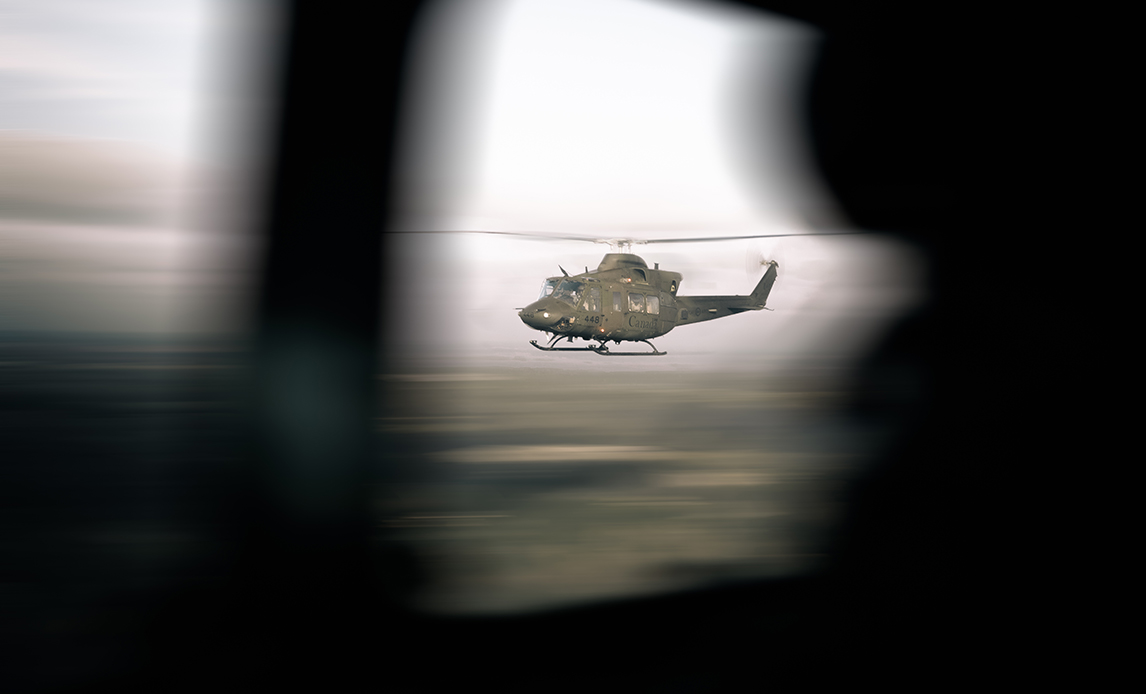
A Canadian helicopter with a Danish major general during an exercise in Latvia — an image symbolic of NATO’s nature. Photo: NATO Public Affairs Office
This is part of Exercise Namejs, an annual drill where Latvia, together with its NATO allies, trains to defend the country against a hostile attack.
Among these allies is the Danish Army’s 1st Brigade, present with about 300 troops from all its different capacities. This gives Danish soldiers the opportunity to train alongside the alliance partners they would work closely with if Latvia were ever attacked.
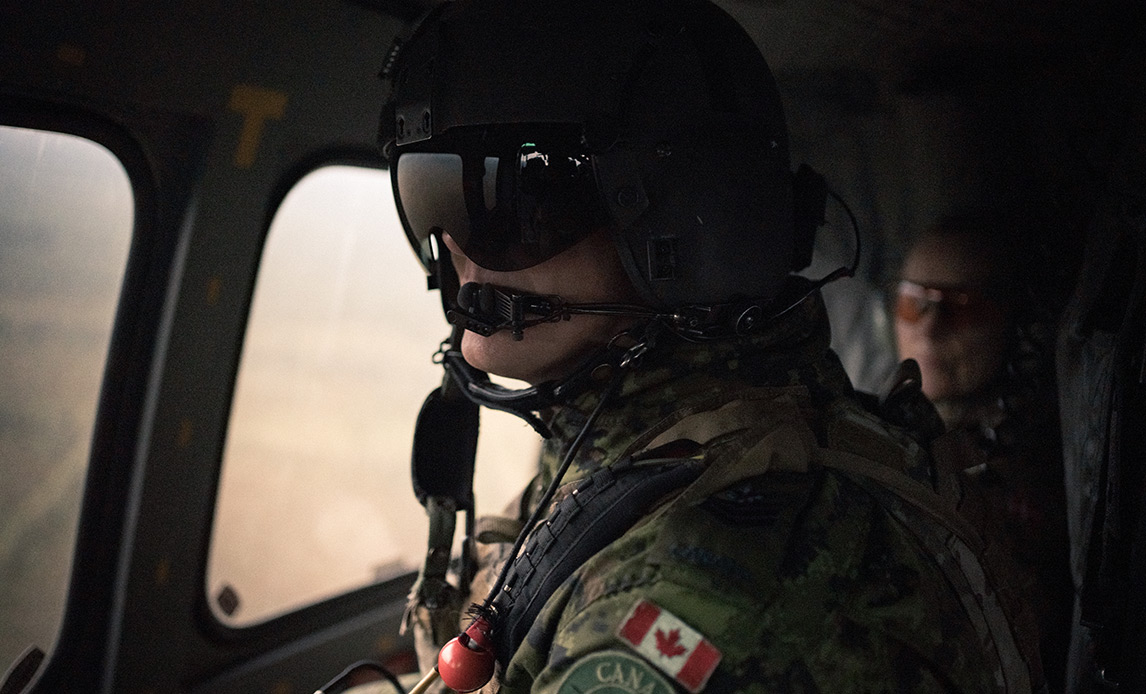
Photo: NATO Public Affairs Office
Taking the threat of war seriously
A Danish general aboard a Canadian helicopter, on her way to visit two Latvian units that would, in the event of war, come directly under her command — it’s a perfect picture of NATO’s multinational character.
And while some might see that diversity as a weakness, Jette Albinus does not:
“Every NATO country brings its own unique experiences and skills, which we combine in the fight toward a common goal. That’s why I see our diversity as the alliance’s greatest strength,” she says.
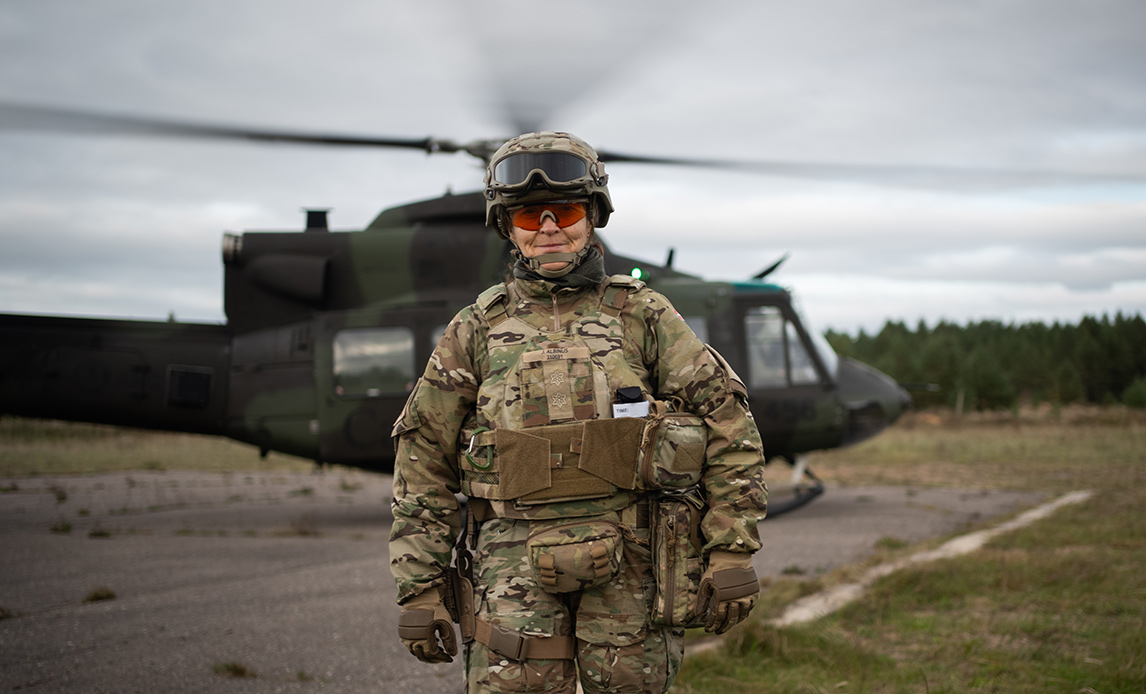
Major General Jette Albinus visits units from the Latvian Army and National Guard during Exercise Namejs. Photo: NATO Public Affairs Office
Namejs 2025 runs for several weeks, and in its opening phase, the scenario placed troops in the “gray zone” between war and peace—where hybrid attacks and growing streams of intelligence pointed toward an imminent assault on the country. That attack has now occurred in the exercise, triggering NATO’s Article 5, meaning direct support from allied partners in the fight against the enemy.
The first stop of the day for Jette Albinus is with the 3rd National Guard Brigade, based in eastern Latvia near the border with Russia and Belarus, and therefore already engaged in this simulated battle.
At the brigade headquarters, Colonel Gunārs Vizulis welcomes her with his staff, briefing the Danish general on the situation in their area of responsibility.
Afterward, Vizulis emphasizes that both NATO and Latvia are ready if today’s scenario were ever to become reality:
“The threat of war is something we take seriously and prepare for with determination. Exercises like Namejs are an important part of that, because they allow us to train together across NATO and identify potential challenges in advance,” says the colonel, adding:
“Our soldiers already work together at a high level, and in my view, we’re more than ready to meet any threat that may come.”
The next stop of the day is the headquarters of the Latvian Mechanized Infantry Brigade, located in a stuffy basement where young soldiers monitor the situation on the battlefield through an array of screens.
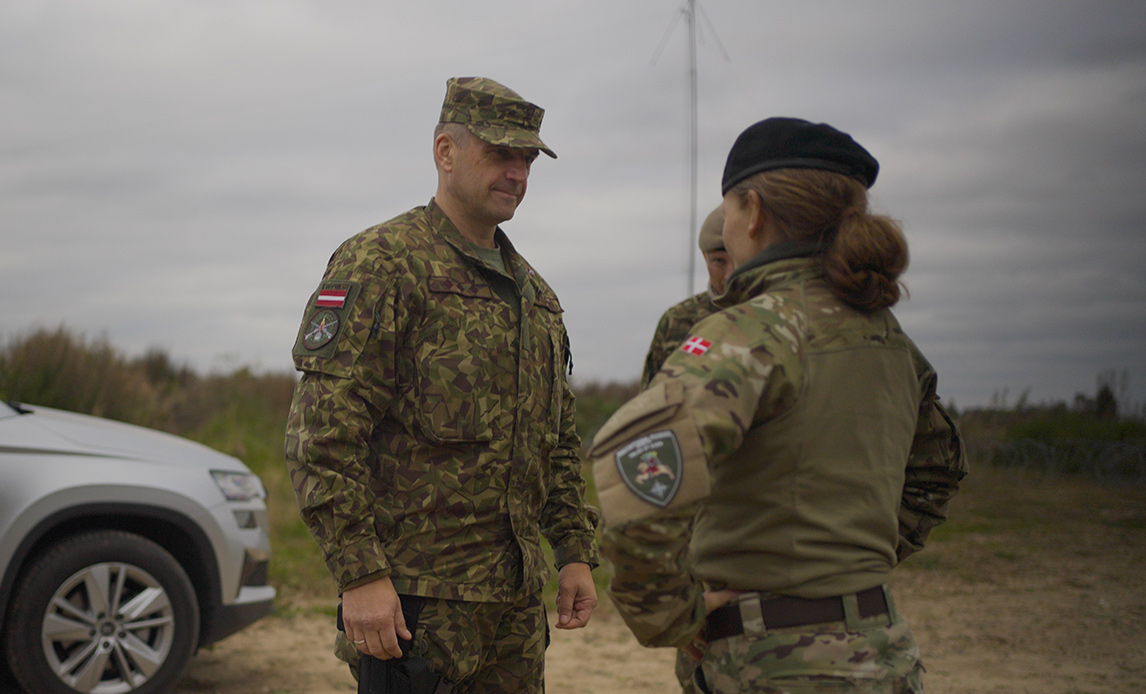
Latvian units take the threat of war very seriously and prepare for it with great focus. Photo: NATO Public Affairs Office
Fighting in civilian environments
Just like at the 3rd National Guard Brigade, Jette Albinus receives a situational update from the staff here, and in both briefings the same questions recur:
Which axes is the enemy attacking along? How is the combat strength of the brigade’s units? What are the options for launching counterattacks? Which bridges are still standing—and which have been blown up? And not least—how are the many civilians fleeing the area being handled?
These are questions every military leader must confront on the battlefield. And although they are in this case being asked as part of an exercise, it’s hard to forget that Ukrainian soldiers right now are sitting in similar briefings—where each question hides a harsh reality for real people, both soldiers and civilians.
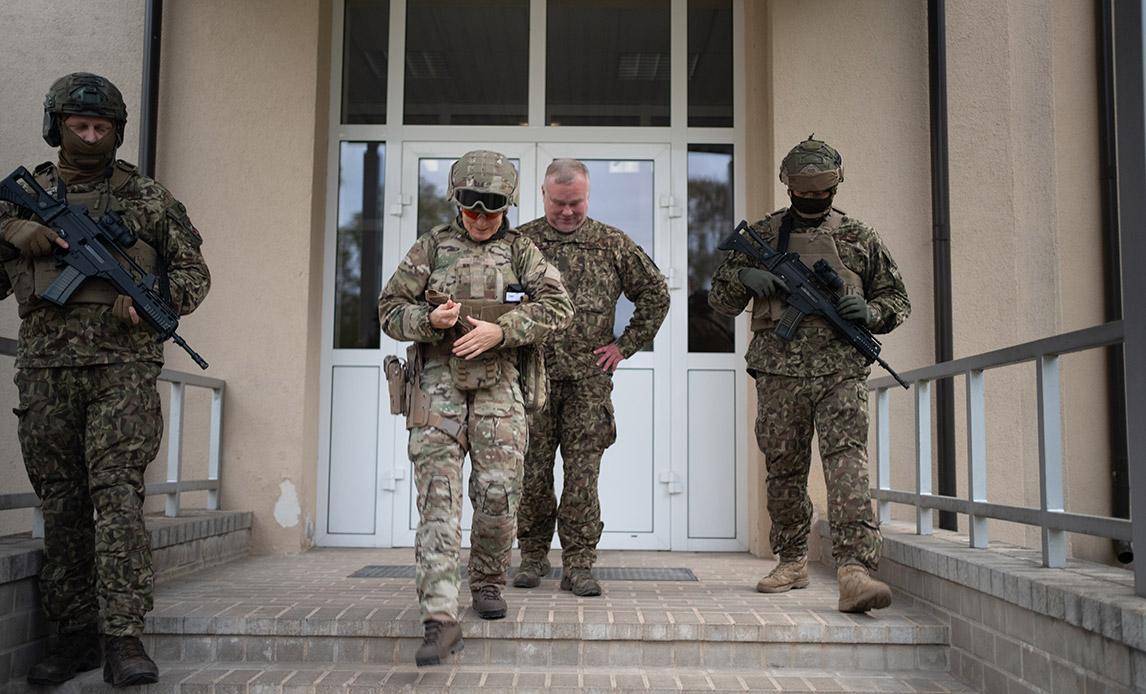
Exercise Namejs takes place across the entire country of Latvia. Photo: NATO Public Affairs Office
The best way to prepare for such realities is to train under conditions as realistic as possible. That’s why Namejs isn’t held only on closed military training grounds, but across the entire country—through forests, fields, and cities, among the Latvian population. It’s their homes that, in the worst case, could one day become a war zone.
That knowledge is a strong motivating force for Colonel Igors Kļaviņš, commander of the Mechanized Infantry Brigade:
“NATO is not just some theoretical agreement. The alliance exists in the real world through its soldiers, who train together across nationalities and thereby show the enemy that we are ready to fight. It’s our unity that must prevent my homeland from ever becoming a battlefield.”